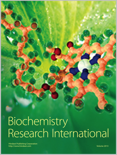
BIOCHEMICAL SOCIETY TRANSACTIONS
Scope & Guideline
Exploring the Frontiers of Biochemistry Together
Introduction
Aims and Scopes
- Biochemical Mechanisms and Pathways:
The journal covers studies that elucidate various biochemical mechanisms, including enzymatic reactions, metabolic pathways, and signal transduction processes, highlighting their roles in physiological and pathological contexts. - Molecular Biology and Genetics:
Research exploring molecular genetics, including gene expression, regulation, and the role of non-coding RNAs, is prominently featured, emphasizing how these processes affect cellular functions and contribute to diseases. - Structural Biology and Biophysics:
The journal publishes articles on the structural analysis of biomolecules using advanced techniques such as cryo-electron microscopy and NMR, providing insights into the molecular basis of function and interaction. - Cellular and Developmental Biology:
Contributions related to cellular dynamics, development, and differentiation processes are included, focusing on how biochemical signals influence cellular behavior and fate. - Translational Research and Therapeutics:
The journal emphasizes translational research that bridges basic science and clinical applications, including studies on drug development, therapeutic targets, and the biochemical basis of diseases. - Environmental and Ecological Biochemistry:
Research exploring biochemical processes in ecological contexts, including microbial interactions and environmental stress responses, is also an important aspect of the journal.
Trending and Emerging
- Systems Biology and Omics Approaches:
There is an increasing trend towards systems biology and omics approaches (genomics, proteomics, metabolomics) that provide comprehensive insights into biological systems, enabling researchers to understand complex interactions and regulatory networks. - Targeted Therapeutics and Drug Development:
Research focused on targeted therapeutics, including small molecules and biologics aimed at specific biochemical pathways, is on the rise, driven by advancements in precision medicine and personalized therapy. - Neurobiochemistry and Neurodegeneration:
The exploration of neurobiochemical processes, particularly those related to neurodegenerative diseases and brain health, is gaining prominence, emphasizing the biochemical underpinnings of neurological disorders. - Microbiome and Host Interactions:
Studies investigating the biochemical interactions between microbiomes and their hosts are emerging, highlighting the role of gut microbiota in health and disease and their influence on metabolic processes. - Biochemical Basis of Immunity and Inflammation:
Research addressing the biochemical mechanisms underlying immune responses and inflammation is trending, particularly in the context of infectious diseases and autoimmune disorders. - Environmental Biochemistry and Sustainability:
There is a growing interest in environmental biochemistry, focusing on biochemical processes that impact sustainability, such as bioremediation and the biochemical basis of climate change responses.
Declining or Waning
- Classical Biochemistry Techniques:
There has been a noticeable decline in publications focusing on classical biochemistry techniques, such as basic enzyme assays and traditional chromatography methods, as researchers increasingly adopt high-throughput and automated approaches. - Basic Physiological Studies:
Research centered on fundamental physiological studies, particularly those not tied to specific diseases or translational applications, has diminished, possibly due to a greater emphasis on disease relevance in biochemical research. - Historical Perspectives on Biochemical Discoveries:
The journal has seen fewer papers discussing historical perspectives or reviews of classical biochemical discoveries, as the focus shifts towards current research trends and cutting-edge discoveries. - In vitro Models without Disease Context:
Studies utilizing in vitro models that do not directly address disease mechanisms or therapeutic applications have become less common, as there is a growing preference for research that translates findings into clinical relevance.
Similar Journals

FISH PHYSIOLOGY AND BIOCHEMISTRY
Advancing Understanding of Fish PhysiologyFISH PHYSIOLOGY AND BIOCHEMISTRY, published by Springer, is a leading journal in the fields of aquatic science, biochemistry, and physiology, with an impressive trajectory since its inception in 1986 and continuing through 2024. Operating from the Netherlands, this journal serves as a vital platform for researchers, professionals, and students alike, showcasing innovative studies that explore the physiological and biochemical aspects of fish, contributing significantly to our understanding of aquatic ecosystems and their inhabitants. With a robust impact factor reflected in its Q1 status in Aquatic Science and notable rankings in other relevant categories, FISH PHYSIOLOGY AND BIOCHEMISTRY maintains a strong scholarly influence, evidenced by its Scopus ranking within the top quartiles of various biological sciences disciplines. While the journal does not currently offer open access options, it remains a cornerstone for advancing knowledge and fostering collaboration within the community dedicated to aquatic biology and related fields.

BIOCHEMISTRY-MOSCOW
Fostering Excellence in Biochemical DiscoveriesBIOCHEMISTRY-MOSCOW is a distinguished academic journal published by MAIK NAUKA/INTERPERIODICA/SPRINGER, focusing on pivotal research in the fields of biochemistry, biophysics, geriatrics, and broader medical sciences. Established in 1972, the journal has a rich history of disseminating critical findings and innovative studies, making significant contributions to the advancement of biochemical knowledge and applications. With its Q2 ranking in various categories including biochemistry and gerontology, the journal commands respect within the scientific community, offering a reputable platform for both established researchers and emerging scholars alike. Although traditionally not an open-access journal, it provides a wealth of information accessible through institutional subscriptions, ensuring the latest advancements reach a global audience. The journal aims to enhance understanding of biochemical processes and their implications for human health, and its commitment to high-quality peer-reviewed content has established it as a vital resource for those invested in the life sciences.

IUBMB LIFE is a prestigious, peer-reviewed journal published by WILEY, dedicated to advancing the fields of biochemistry, molecular biology, and cell biology. With an impressive impact factor and consistently ranked in the Q1 and Q2 categories across multiple relevant disciplines—including Biochemistry, Genetics, and Clinical Biochemistry—this journal has established itself as a leading platform for disseminating innovative research and critical reviews that propel scientific discovery. The journal spans a converged publication period from 1999 to 2024, providing comprehensive insights into the dynamic landscape of biochemical research. Researchers, professionals, and students alike are invited to explore its Open Access options, ensuring that groundbreaking studies are accessible to a global audience. As it continues to shape the future of life sciences, IUBMB LIFE remains a vital resource for those seeking to enrich their understanding and contribute to these rapidly evolving fields.

Biochemistry Research International
Fostering innovation in biochemistry through open access research.Biochemistry Research International is a prominent and dynamic journal published by Hindawi Ltd, dedicated to advancing knowledge in the field of biochemistry. With its Open Access model established since 2010, the journal provides unrestricted access to high-quality research, thereby fostering global communication among researchers and professionals. Operating out of the United States, Biochemistry Research International serves as a vital platform for disseminating cutting-edge findings in biochemistry and molecular biology, holding a respectable Q2 ranking in its category as of 2023. The journal's scope encompasses a wide array of topics including but not limited to biochemical processes, genetic engineering, and molecular interactions, making it an essential resource for students and seasoned researchers alike. With an impact factor reflective of its significance in the academic community, Biochemistry Research International continues to play an integral role in shaping the future of biochemistry research.

Journal of Biochemistry
Your essential resource for biochemical advancements.Journal of Biochemistry, published by Oxford University Press, is a prestigious academic journal that has been at the forefront of biochemical research since its inception in 1922. With an ISSN of 0021-924X and an E-ISSN of 1756-2651, this journal serves as a platform for disseminating high-quality research in the fields of biochemistry, molecular biology, and medicine, holding impressive rankings such as Q2 in Biochemistry and Medicine (miscellaneous) in 2023. As of 2024, the journal continues to explore significant topics in these areas, offering valuable insights for researchers, professionals, and students alike. The journal does not currently offer open access, but it remains a vital resource for anyone in the biochemical community seeking to stay updated on the latest discoveries and advancements. With its rich history and dedication to scientific excellence, the Journal of Biochemistry is an indispensable part of the scholarly landscape.

COMPARATIVE BIOCHEMISTRY AND PHYSIOLOGY B-BIOCHEMISTRY & MOLECULAR BIOLOGY
Connecting the Dots in Biochemistry and PhysiologyComparative Biochemistry and Physiology B: Biochemistry & Molecular Biology, published by Elsevier Science Inc, is a premier journal dedicated to the field of biochemistry and molecular biology with a specific focus on comparative analyses across various biological systems. Since its inception in 1971, the journal has made significant contributions to our understanding of the biochemical and physiological processes that differentiate organismal function across animal and aquatic life. The journal holds a commendable position in the academic community, evidenced by its 2023 rankings, which place it in the second quartile for Animal Science and Zoology and Aquatic Science, and the third quartile for both Biochemistry and Molecular Biology as well as Physiology. Researchers and students can access cutting-edge research through this highly respected publication, which continues to influence the future of biological sciences. While currently not an Open Access journal, its rigorous peer-review process ensures that only high-quality articles are disseminated, further solidifying its role as a critical resource for professionals and academics alike seeking to explore the intricate relationships between biochemical structures and physiological functions.

CELLULAR PHYSIOLOGY AND BIOCHEMISTRY
Elevating the Standards of Biochemical ResearchCellular Physiology and Biochemistry is a premier Open Access journal published by the prestigious Cell Physiol Biochem Press GmbH & Co, dedicated to advancing research in the fields of physiology, biochemistry, and molecular biology. Since its inception in 1987 and transitioning to an Open Access model in 2013, the journal has established itself as a vital resource for the dissemination of high-quality research and reviews, showcasing innovative methodologies and groundbreaking findings in cellular processes. With an impressive ranking in the 2023 Scopus category as Q2 in Physiology and a robust percentile of 61, Cellular Physiology and Biochemistry is committed to fostering academic dialogue among researchers, professionals, and students alike. This journal not only provides unrestricted access to its articles, but also promotes the global sharing of knowledge, which is essential for the advancement of our understanding in these vital scientific areas. The journal's editorial team is dedicated to ensuring the highest standards of academic rigor and relevance, making it an indispensable addition to the libraries of those engaged in the life sciences.

FEBS LETTERS
Fostering Knowledge Exchange in Life SciencesFEBS LETTERS, published by Wiley, is a prestigious journal that has firmly established its place in the fields of biochemistry, biophysics, genetics, molecular biology, cell biology, and structural biology. With an esteemed history dating back to 1968, this journal continues to be a vital resource for researchers and professionals involved in the biological sciences. It boasts impressive quartile rankings, including Q1 statuses in several categories such as Biochemistry and Genetics, reflecting its high impact factor and significant contribution to scientific discourse. FEBS LETTERS provides a platform for innovative findings and critical reviews, fostering the exchange of knowledge and ideas within the scientific community. Although it operates under a subscription model, the journal ensures broad dissemination of groundbreaking research through its rigorous peer-review process. The vibrant discussions encouraged by articles published in FEBS LETTERS aim to inspire current and future generations of scientists to push the boundaries of biological understanding, making it an indispensable resource for anyone dedicated to advancing their knowledge in these dynamic fields.

BIOCHEMICAL AND BIOPHYSICAL RESEARCH COMMUNICATIONS
Elevating discourse in biochemistry and biophysics.BIOCHEMICAL AND BIOPHYSICAL RESEARCH COMMUNICATIONS, published by Academic Press Inc Elsevier Science, stands as a leading periodical in the fields of biochemistry, biophysics, cell biology, and molecular biology. With an ISSN of 0006-291X and an E-ISSN of 1090-2104, this esteemed journal has been a pivotal platform for the dissemination of groundbreaking research since its inception in 1959, continuing to publish influential findings through at least 2024. It holds a commendable Q2 ranking in Biochemistry and Q1 status in Biophysics as of 2023, reflecting its high impact and relevance in the field, supported by its strong Scopus rankings—ranking #43 in Biophysics and maintaining a presence in the top quartiles of several related categories. Although it is not an open-access journal, it provides critical insights and essential data that cater to researchers, professionals, and students keen on advancing their understanding of complex biochemical and biophysical processes. Its significant contributions to the scientific community underscore the importance of this journal as a reference point for innovative research and collaborative discourse.

JOURNAL OF BIOLOGICAL CHEMISTRY
Advancing the Frontiers of Biochemical ResearchJOURNAL OF BIOLOGICAL CHEMISTRY, published by Elsevier, is a premier interdisciplinary journal dedicated to advancing our understanding of biochemistry, cell biology, and molecular biology. With a prestigious history dating back to 1945 and an impressive convergence of research expected to continue through 2024, this journal holds a Q1 ranking in all three of its core categories, signaling its critical influence in the respective fields, supported by a robust Scopus ranking that places it among the top echelons of internationally recognized research. Although currently not available as Open Access, the journal is essential for researchers and professionals looking to stay abreast of the latest breakthroughs and innovations in biochemical research. With a deep commitment to scientific rigor and a focus on diverse topics ranging from cellular processes to molecular mechanisms, the Journal of Biological Chemistry serves as a vital resource for the academic community, shaping the future of biological sciences.